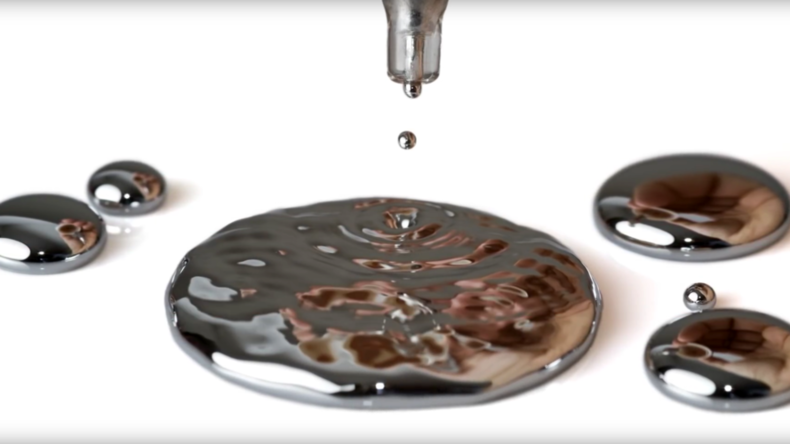Revolutionary liquid metals bring shape-shifting Terminator tech closer to reality (VIDEO)

Shape-shifting Terminator robots presently remain a sci-fi fantasy, but scientists in Australia claim the deadly technology may one day be possible thanks to self-propelling liquid metals.
The mutating T-1000 killing machine was witnessed by moviegoers in the 1991 blockbuster classic Terminator 2.
It saw actor Robert Patrick play a robot assassin made from the fictional metal “mimetic polyalloy,” which allowed the advanced Terminator to take on many forms and rapidly repair itself from otherwise fatal damage.
Mimetic polyalloy remains confined to the movie script. However, scientists at Melbourne’s RMIT University have announced a “critical step” towards extremely malleable electronics, opening the door for futuristic liquid kill bots.
Researchers trying to advance the move away from solid state electronics say experiments using non-toxic alloys of gallium have yielded some promising results.
By exposing droplets of gallium to a water tank and changing the water’s pH levels, scientists found that the highly conductive metal moved by itself and even changed shape.
“Putting droplets in another liquid with an ionic content can be used for breaking symmetry across them and allow them to move about freely in three dimensions, but so far we have not understood the fundamentals of how liquid metals interacts with surrounding fluid,” said Melbourne researcher, professor Kourosh Kalantar-zadeh.
“Simply tweaking the water’s chemistry made the liquid metal droplets move and change shape, without any need for external mechanical, electronic or optical stimulants.
“Using this discovery, we were able to create moving objects, switches and pumps that could operate autonomously – self-propelling liquid metals driving by the composition of the surrounding fluid,” he explained.
Kalantar-zadeh hopes that one day breakthroughs will enable liquid metals to be used to build 3D electronics and perhaps even a less murderous version of the T-1000.
“Eventually, using the fundamentals of this discovery, it may be possible to build a 3D liquid metal humanoid on demand - like the T-1000 Terminator but with better programming.”
The full study on soft cell electronics is published in this month’s Nature Communications journal.











